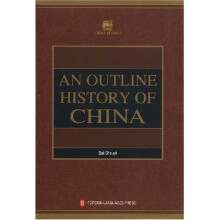Chapter I Introduction
1.A Land of 9.600.000 Square Kilometres
2.Fifty-six Ethnic Groups and a Population of More 11han 1.003,000,000
3.1,700.000 Years and 3.600 Years
Chapter II Traces of Remote Antiquity
1.From Yuanmou Man to Peking Man;the Making of Tools andthe Use ofFire
2.Dingcun(Tingtsun)Man and Upper Cave Man;the Improve-ment of Tools and the Emergence of Ornaments
3.The Yangshao Culture and Its Matriarchal Communes
4.The Patriarchal Clan Society of the Longshan Culture
ChapterIII Myth and Legend
1.The Legends 0f Ancient Tribes
2.Tnbal Chiefs.Gods and Their Sons
3.The Hereditary Monarchy of the Xia Dynasty
Chapter IV The Slave State of the Shang and Zhou Dynasties
1.The Earliest Written History
2.The Slave-owning Shang Dynasty
3.The Social Economy of the Shang Dynasty
4.The Rise of the Zhou and the Establishment of the Slave.owning Zhou Dynasty
5.Economic Development Under Zhou Slavery
6.The Zhou Dynasty from Prosperity to Decline
Chapter V The Early Eastern Zhou,Spring and Autumn,andWarring States Periods:Transition from Slavery toFeudalism
1.The Early Eastern Zhou and the Spring and Autumn Period:
Contention for Supremacy Among the Maior States
2.The Seven Powers of the Warring States Period
3.The Transition from Slavery to Feudalism
4.Confucius,MO Zi,Other Thinkers and the Elegies of ChuChapter VI The Oin and Han Dynasties:the Growth of FeudalSociety
1.The Oin,ChinaS First Feudal Dynasty
2.Peasant Uprisings in the Late Qin Dynasty
3.Establishment and Consolidation of the W_estern Han Dynasty
4.Golden Age of the Wlestern Han Dynasty
5.Decline of the Western Han Dynasty;Uprisings of the GreenWloodsmen and Red Eyebrows
6.The Establishment of the Eastern Han Dynasty.the ProlongedTurbulence,and the Yellow Turban Uprising
7.The Development of Social Productive Forces
8.The Growth of Feudal Relations
Chapter VII The Three KingOoms,the Jin,the Southern andNorthern Dynasties,the Sui and the Tang:the Ear-lier Period Of Ascendancy of Chinese Feudalism
1.The Three Kingdoms
2.The Western Jin.the Eastern Jin and the Sixteen States
3.The Southern and Northern Dynasties
4.The Establishment of the Sui Dynasty and the Peasant Upris-ings in Its Closing Years
5.The Golden Age ofthe Tang
6.Turmoilin the Mid-Tang Period
7.The Decline of the Tang Empire and the Late-TIang PeasantUprisings
8.The Development of Social Productive Forces
9.The Development of Feudal Relations and the Feudalization ofRegions Inhabited by Several Ethnic Group
Chapter VIII The Five Dynasties.the Song and the Yuan:the Later Period Of Ascendancy 0f Chinese Feudalism
1.The Five Dynasties and Ten States
2.Rise and Fall of the Northern Song;Uprisings by Wang Xiao-bo and Fang La
3.The Liao.the Xia and the Jin:Their Relations with the North-ern Song
4.Rival Regimes of the Song and the Jin;Uprisings by ZhongXiang,Yang YaO and the Red Jackets
5.The Rise of the Mongols and the FalI of the Xia,the Jin andthe Southern Song
6.Founding of the Yuan Dynasty and Peasant Uprisings Duringthe Late Yuan
7.Further Growth of Social Productivity;Southward Shift ofEconomic Development
8.Further Development of Feudal Relations;Feudalization of theBorder Regions
9.ChinaS Communications with the Outside Worid
Chapter IX The Ming-Qing Period:the Twilight of Feudalism
1.Establishment of the Ming Dynasty
2.Decline of the Ming Dyansty;Refugee and Miner Uprisings
3.Decay of the Ming Dynasty;Peasant Uprisings Continued
4.Rise of the Manchus;Peasant Uprisings To·wards the End of the Ming;Fall of the Ming Dynasty
5.Peasant Regime of the Great Shun;Princes of the SouthernMing;Unification Activities During the Early Qing Dynasty
6.Qing Rule Strengthened
7.Decline of the Qing;Uprisings of Different Ethnic Groups
8.The Decline of Feudalism and the Emergence of Sprouts ofCapitalism
9.Arrival of Wlestern Coionialism
Bai Shouyi(1909-2000)was bor in Kaifeng、Henan Province and cducated at Zhongshan andYanjing univcrsitics.Bcgimling his tcachillg carerin 1939,he taught for lnore than 40 years,first atYunnan Univcrsity,thcn at NalI ing University andlater at Beijing Taacllers University where he servedas head or both the Department of History and thelnstitute of Htistory.
Ptofessor BaiS many-sided acadcmic interestsarc refleetcd in the courses he taught on such sub-jects as general historiography,historical nlatcriat-ism、a general history of China,cultural history of China.history of Chinese historiography,history ofChinas external communication,history of ChincseIslamisnl.history of the Spring and AuttlIllli-War-ring States Period.history of thc Sui and Tang dvxlastits,and history of the Qillg Dynasty.

 缺书网
缺书网 扫码进群
扫码进群



